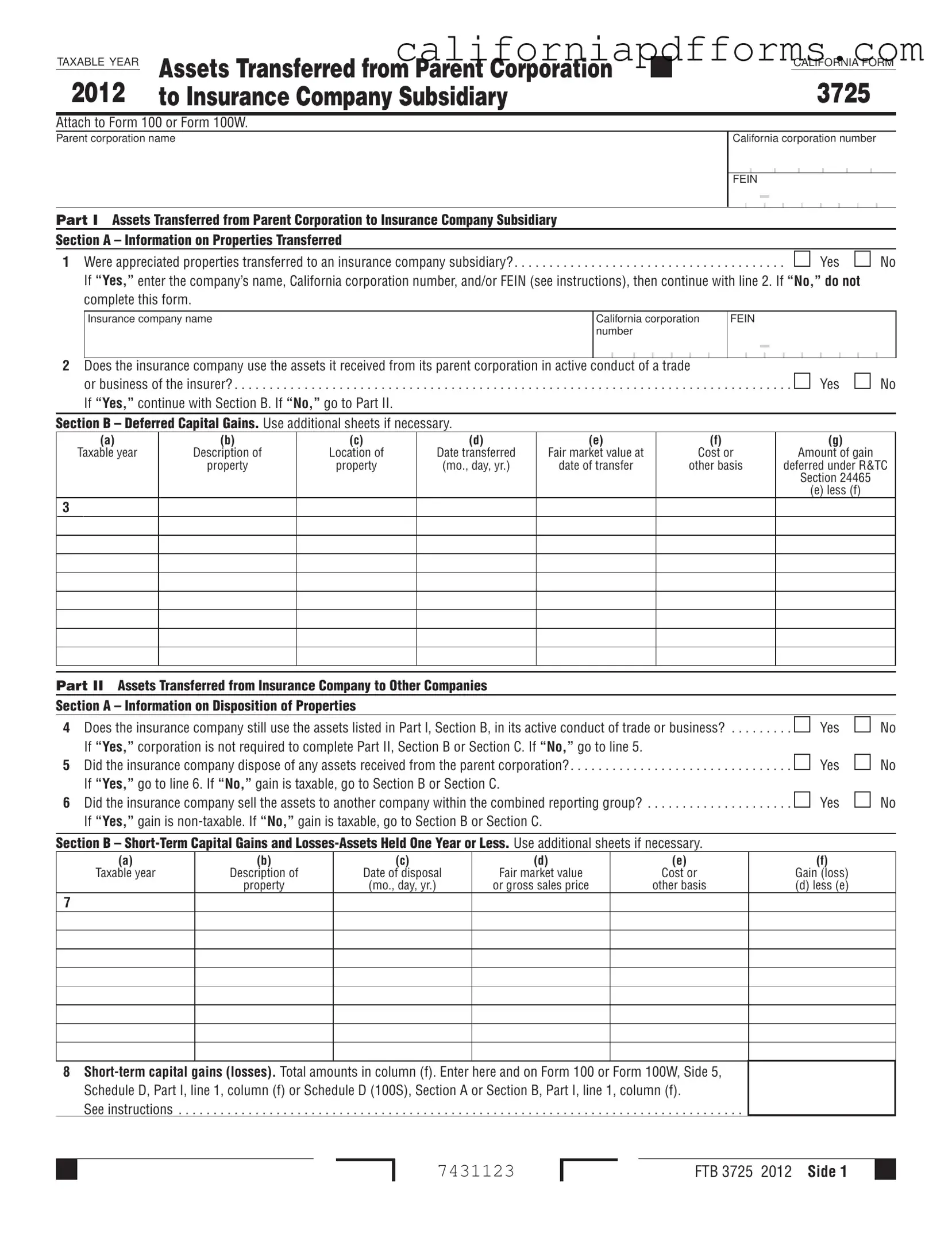The California 3725 form is used to report assets transferred from a parent corporation to its insurance company subsidiary. It helps track these transfers and calculate any capital gains or losses associated with the transaction. This form is particularly important for transactions involving appreciated property, as it determines whether gains can be deferred under California Revenue and Taxation Code Section 24465.
You should use the California 3725 form if your corporation transferred appreciated properties to an insurance company subsidiary on or after June 23, 2004. If no appreciated properties were transferred, you do not need to complete this form. Additionally, the form must be attached to either Form 100 or Form 100W when filing your taxes.
The form requires several pieces of information, including:
-
The name and identification numbers (California corporation number and FEIN) of both the parent corporation and the insurance company subsidiary.
-
A description of the properties transferred, their fair market value at the time of transfer, and the cost or adjusted basis of those properties.
-
Details regarding whether the insurance company is actively using the transferred assets in its business.
What happens if the insurance company no longer uses the transferred assets?
If the insurance company stops using the transferred assets in its active trade or business, the gain on those assets becomes taxable. The form requires you to report this gain, as it can affect your overall tax liability. It is crucial to keep accurate records of how and when the assets are used or disposed of to ensure compliance.
Capital gains or losses are reported in two sections of the form, depending on how long the assets were held:
-
Short-term capital gains and losses apply to assets held for one year or less.
-
Long-term capital gains and losses apply to assets held for more than one year.
For each section, you will need to provide details such as the description of the property, date of disposal, fair market value, and cost or other basis. The final gain or loss is calculated by subtracting the cost from the fair market value or gross sales price.
What if the insurance company sells the assets to another company?
If the insurance company sells the assets to another company within the combined reporting group, the gain from that sale is considered non-taxable. However, if the sale occurs outside the group, the gain may be taxable. It is essential to accurately document these transactions to determine the tax implications correctly.
Yes, there are specific line instructions that must be followed. For instance, when describing the properties transferred, you should provide detailed information about each asset. Additionally, ensure that you enter the fair market value accurately and calculate the adjusted basis correctly. Failure to follow these instructions can lead to issues with your tax filings.
Additional resources can be found on the California Franchise Tax Board's website. They provide detailed instructions, FAQs, and contact information for assistance. Consulting with a tax professional is also advisable if you have specific questions or complex situations regarding the form.
